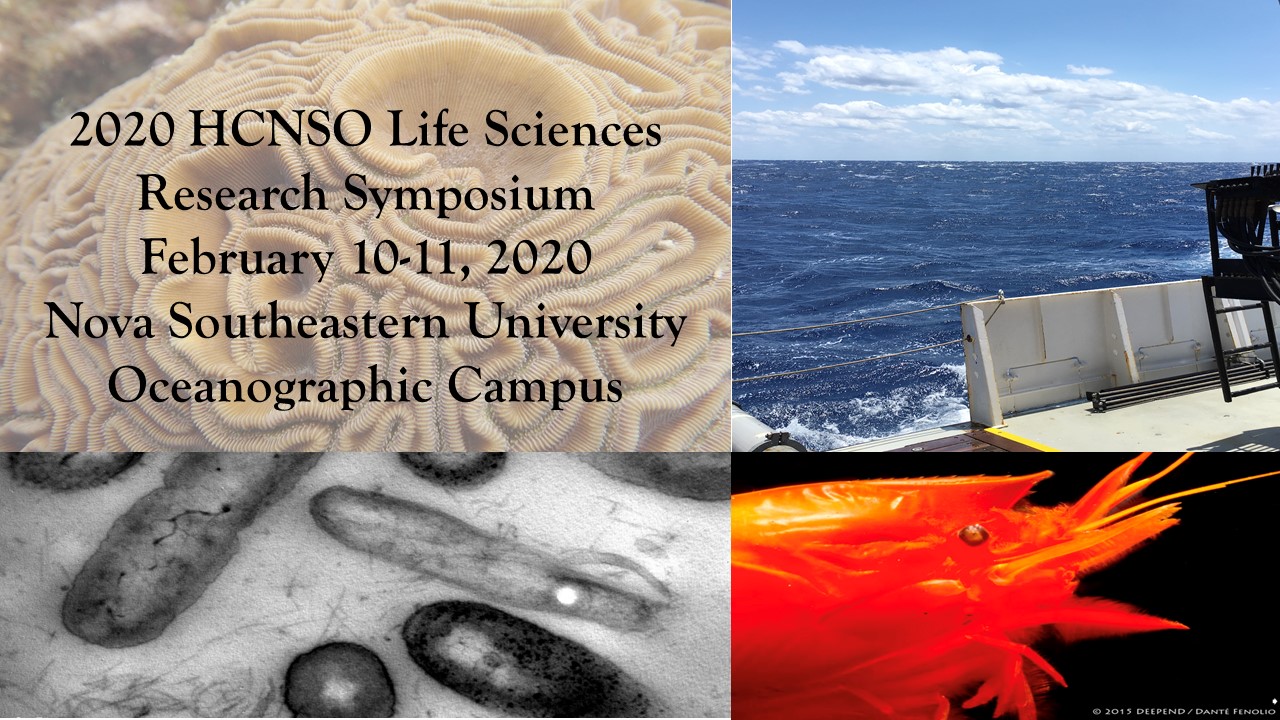Don’t Bite the Hand that Feeds you: Examining the Effects of Provisioning Tourism on Nurse Sharks in Caye Caulker, Belize
Location
HCNSO Guy Harvey Oceanographic Center Nova Southeastern University
Start
2-10-2020 3:00 PM
End
2-10-2020 3:30 PM
Type of Presentation
Poster Presentation
Abstract
Title: Don’t Bite the Hand that Feeds you: Examining the Effects of Provisioning Tourism on Nurse Sharks in Caye Caulker, Belize
Authors: Carlee Jackson, Sophie Pipe, Matt Beal, and Derek Burkholder
Author Affiliations: Nova Southeastern University, and Frontier
Abstract
Wildlife tourism is increasing in popularity around the world, creating the need to understand alterations in animal behavior and spatial distribution that may occur due to anthropogenic disturbances. Nurse sharks, Ginglymostoma cirratum, are commonly used for wildlife ecotourism within the Caye Caulker Marine Reserve in Belize. Shark and Ray Village (SRV) is a site in the reserve where nurse sharks are regularly fed by tour/snorkel boats, termed provisioning tourism. Previous to this experiment, no studies had been conducted in SRV to evaluate the effects provisioning tourism might have on its resident nurse sharks. The purpose of this study was to assess and determine any effects provisioning tourism activities might have on the behavior, habituation, body condition and abundance of resident nurse sharks in SRV. In-water surveys were conducted to examine the effects of provisioning, tourist presence and boat traffic on the frequency of five forms of behavior (milling, active swimming, conspecific aggression, interspecific aggression and shark initiated human interaction). Underwater cameras were placed within SRV to monitor and determine the extent of habituation displayed by the nurse shark population. A video abundance estimation technique, MaxN, was used to compare the relative abundance of nurse sharks within SRV to that in control sites outside of SRV. Some sharks showed evidence of physical injury from boat propellers, and a percentage of sharks with these injuries was calculated. Results from this study suggest that the nurse sharks are very responsive to the sound of boat engines in the area, showing signs of habituation to the vessels and ultimately the tourism operations. Abundance of nurse sharks in SRV was noticeably greater than abundance in control sites, suggesting overuse of the site. The conclusions made from this study will be presented to the Caye Caulker Fisheries Department in hopes of implementing improved regulations and management techniques.
Don’t Bite the Hand that Feeds you: Examining the Effects of Provisioning Tourism on Nurse Sharks in Caye Caulker, Belize
HCNSO Guy Harvey Oceanographic Center Nova Southeastern University
Title: Don’t Bite the Hand that Feeds you: Examining the Effects of Provisioning Tourism on Nurse Sharks in Caye Caulker, Belize
Authors: Carlee Jackson, Sophie Pipe, Matt Beal, and Derek Burkholder
Author Affiliations: Nova Southeastern University, and Frontier
Abstract
Wildlife tourism is increasing in popularity around the world, creating the need to understand alterations in animal behavior and spatial distribution that may occur due to anthropogenic disturbances. Nurse sharks, Ginglymostoma cirratum, are commonly used for wildlife ecotourism within the Caye Caulker Marine Reserve in Belize. Shark and Ray Village (SRV) is a site in the reserve where nurse sharks are regularly fed by tour/snorkel boats, termed provisioning tourism. Previous to this experiment, no studies had been conducted in SRV to evaluate the effects provisioning tourism might have on its resident nurse sharks. The purpose of this study was to assess and determine any effects provisioning tourism activities might have on the behavior, habituation, body condition and abundance of resident nurse sharks in SRV. In-water surveys were conducted to examine the effects of provisioning, tourist presence and boat traffic on the frequency of five forms of behavior (milling, active swimming, conspecific aggression, interspecific aggression and shark initiated human interaction). Underwater cameras were placed within SRV to monitor and determine the extent of habituation displayed by the nurse shark population. A video abundance estimation technique, MaxN, was used to compare the relative abundance of nurse sharks within SRV to that in control sites outside of SRV. Some sharks showed evidence of physical injury from boat propellers, and a percentage of sharks with these injuries was calculated. Results from this study suggest that the nurse sharks are very responsive to the sound of boat engines in the area, showing signs of habituation to the vessels and ultimately the tourism operations. Abundance of nurse sharks in SRV was noticeably greater than abundance in control sites, suggesting overuse of the site. The conclusions made from this study will be presented to the Caye Caulker Fisheries Department in hopes of implementing improved regulations and management techniques.


